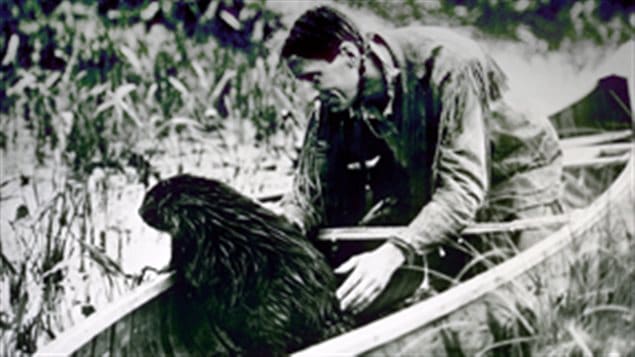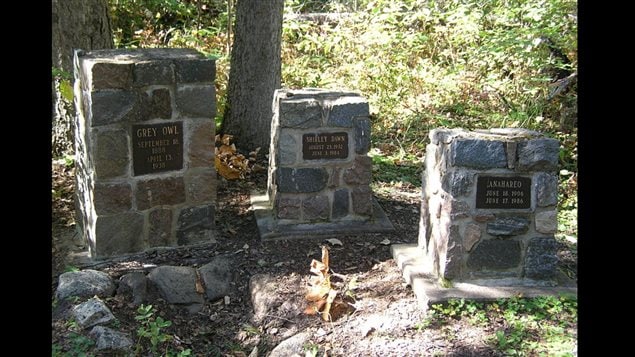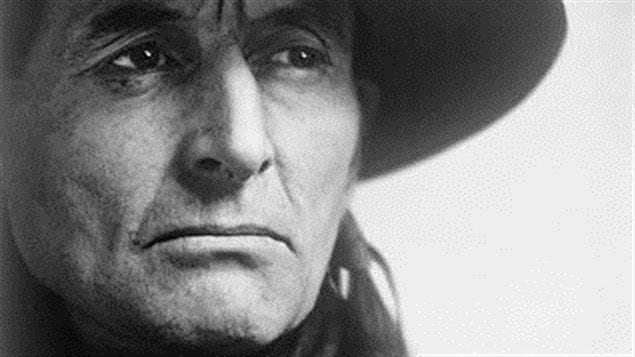It was on this day April 13, 1938, that one of Canada’s best known aboriginal figures, a best-selling author, lecturer, and a pioneer in the world’s conservation movement, died.
Except, he wasn’t aboriginal at all.
For several years the man had been writing about nature and the Canadian wilderness, becomin an extremely popular columnist and author. He soon became a sought after lecturer, speaking to overflow crowds in cities on both sides of the Atlantic on issues of wildlife and nature conservation.
It was only after his death that people found out this famous aboriginal, who had portrayed himself as the son of an Apache woman and a Scotsman, was in fact English.
Archibald Stansfeld Belaney was born in Hastings England on September 18, 1888. As a child he was fascinated by tales of the Canadian wilderness and the freedom, which was so different from his own strict and stuffy, and somewhat unhappy urban life being raised by two maiden aunts.
At age 17, he left England and ended up in first in Toronto where he worked for awhile to save money to travel further north into the boreal forest area of Ontario.
There he learned how to canoe, trap, and generally live off the land. In 1910 he married a young Ojibway woman and together had a daughter, but abandoned them a year later . By 1912 and further west in Ontario, he was also starting to develop his “Indian” persona, something he had originally imagined as a child.

He later served in the Canadian army as a sniper in the First World War, where he was wounded in the foot. Recovering in England he met and married another woman, but left for Canada alone.
Upon his return to the Canadian north he resumed his native way of life, but met another aboriginal woman, Gertrud Bernard, in 1925, whom he later began calling the Iroquois name Anahereo.
It was she who began to talk to him about conservation. When Grey Owl/Belaney trapped an adult beaver, but later found two orphaned kits, he decided to give up trapping for good, perhaps also influenced by the waste and death of the war.
He adopted the two kits, who as they grew, would follow the couple around like house pets.
His writings about the wilderness became popular and with the creation of the Dominion Parks Service, the government saw in him a man with a vision similar to that of the new agency.
He was hired as its first naturalist and the couple, and two beavers, moved first to Riding Mountain Park in Manitoba, then to Saskatchewan and Prince Albert National Park in 1931.
He strongly believed that Canada should preserve the north in its natural state as a basic concept of what Canada was and what it was to be Canadian.
“Canada’s greatest asset to-day is her forest lands. In my latest book I have attacked the average Canadian’s ignorance of his own country. He is prouder of skyscrapers on Yonge Street and the price of hogs. He can have those any time but we can’t replace the natural resources we are destroying as fast as we can.” Grey Owl,Toronto 1936
That same year he wrote his first book, “Men of the Last Frontier”, followed by others: Pilgrims of the Wild (1934), The Adventures of Sajo and the Beaver People (1935); Tales of an Empty Cabin (1936) and others.

The books were immensely popular in Canada, and in Britain, and Grey Owl was an eagerly sought speaker on the world lecture circuit. His theme often revolved around his saying “Remember you belong to Nature, not it to you.”
In the spring of 1938, returning from another three month tour, he caught a mild case of pneumonia, but exhausted he couldn’t fight it off and his condition worsened and he was rushed to hospital where he died on April 13, 1938, at age 49.
At first the newspapers on both sides of the Atlantic ran stories praising him for his stand on conservation and his writing. Then came the bombshell, his British wife came forward with the real story of his origins. Then came more stories of his several marriages and children.
The scandal for decades completely overshadowed his conservation message and for decades he was almost forgotten until the conservation movement began to revive in the 1960’s.
In spite of his somewhat disturbing personal life, there is no denying the importance of his message of decades ago, and indeed it’s increasing relevance today.
Grey Owl is buried near his cabin in Prince Albert National Park alongside Anahereo and their daughter Shirley Dawn.

additional information-sources
- Grey Owl Bio
- CBC- archives
- Grey Owl Books
- Parks Canada- Grey Owl
- Historica Canada
- Grey Owl -wikipaedia
- Inside Toronto- Rouge Park beavers and Grey Owl
- Canadian Icon: Grey Owl, White Indian
- 1930’s Documentary (YouTube) Grey Owl’s Little Brother







For reasons beyond our control, and for an undetermined period of time, our comment section is now closed. However, our social networks remain open to your contributions.